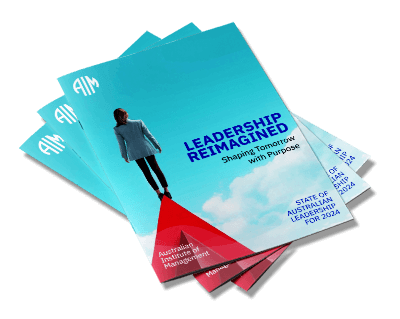The Future of Work: Navigating the New Norm

Although it has been many years since the COVID-19 pandemic, its effects are still evident today. Undeniably reshaping the landscape of the workforce, it sparked a significant shift in employee priorities and work modalities. The transformation has been profound, with employees now placing greater emphasis on wellbeing, work-life balance, and flexibility. This shift creates new challenges and opportunities for leaders aiming to retain talent and maximise team potential.
Understanding Employee Needs
Our annual survey results match those from the LinkedIn 2023 Workplace Learning Report, revealing that employees are increasingly seeking:
- Opportunities for skill development and learning
- Competitive compensation and benefits
- Flexibility in work arrangements
- Career growth prospects and work-life balance support
These priorities underscore the critical role of learning and development (L&D) in staff retention and highlight the need for effective leadership and fair compensation in attracting and retaining talent.
The Shift to Virtual and Hybrid Work
The rise of virtual and hybrid work models has introduced new dynamics in the workplace. While many employees appreciate the flexibility these models offer, concerns about productivity and company culture persist among organisations. However, evidence suggests that embracing flexibility can enhance both productivity and company culture, particularly when employees have control over their work schedules.
Strategies for Retaining Talent
Leaders can navigate these changes by focusing on three key areas:
Fine-tuning Flexibility
- Tailoring work arrangements to meet employee preferences can boost productivity and improve company culture. This involves consulting employees on their ideal working conditions, exploring options like four-day workweeks, and adapting workspaces for hybrid models.
Enhancing Engagement
- Employee engagement is crucial for achieving organisational goals and improving financial performance. Strategies to enhance engagement include establishing metrics to measure engagement, supporting leadership development, and setting engagement goals for managers.
Working on Wellbeing
- Employee wellbeing is closely linked to engagement and productivity. Leaders can promote wellbeing by listening to employee feedback, setting wellbeing-related metrics, and implementing initiatives based on this feedback.
The future of work demands a balanced approach that addresses employee needs while fulfilling organisational goals. A strategic approach will allow leaders to find the balance between productivity, company culture and work-life balance to retain talent. It also prepares organisations to thrive in the evolving workplace landscape.
 Delve into our survey findings and uncover the ever-evolving nature of leadership in an environment where change is the norm. Download the AIM Leadership Reimagined Whitepaper to discover the crucial attributes of effective leadership, and, in the process, learn how to position yourself to seize the future as a catalyst for positive change.
Delve into our survey findings and uncover the ever-evolving nature of leadership in an environment where change is the norm. Download the AIM Leadership Reimagined Whitepaper to discover the crucial attributes of effective leadership, and, in the process, learn how to position yourself to seize the future as a catalyst for positive change.
